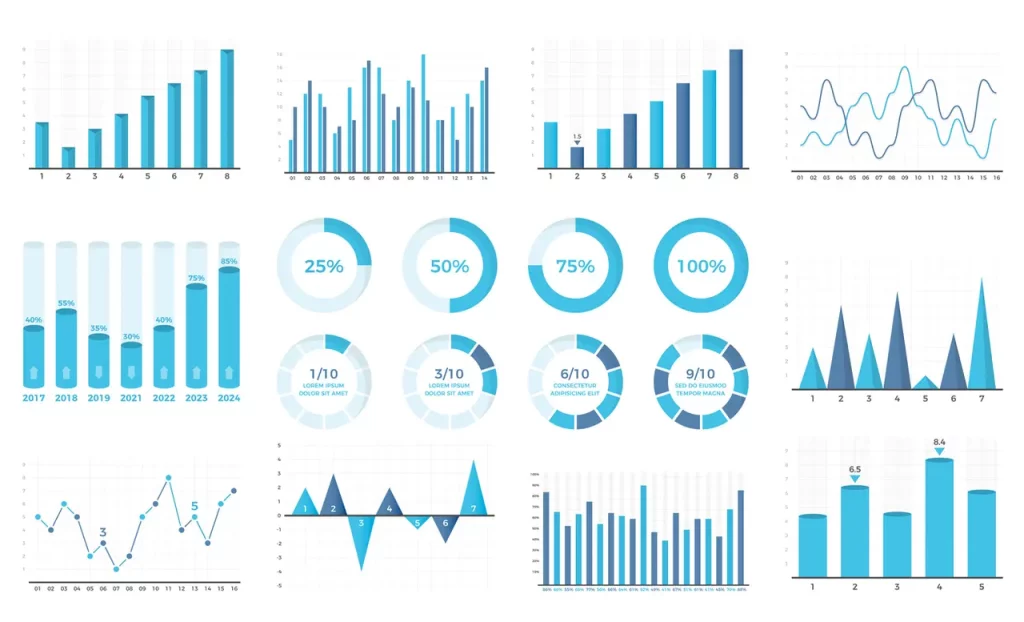
The Future of Digital Marketing: Trends in PPC Advertising Services to Watch
Introduction to PPC Advertising Services in the Digital Marketing Landscape
Pay-Per-Click, or PPC as we often call it, is an internet advertising model that’s become the backbone of digital marketing. It’s simple: advertisers pay a fee each time one of their ads is clicked. Think of it as buying visits to your site, rather than earning them through organic reach. Now, you might wonder, why does it matter so much? Well, in the fast-paced world of the internet, getting noticed is key. PPC allows brands to leapfrog the competition and land directly in front of customers who are already interested in what they have to offer. The beauty of PPC is in its immediate impact and the versatility it offers across different platforms, from search engines like Google to social media networks like Facebook and Instagram. Whether you’re a small startup or a large corporation, mastering PPC can unlock a world of potential for your digital marketing strategy. So, as we dive deeper into the nuances of digital marketing trends and the evolving landscape of PPC advertising services, keep in mind that understanding PPC is your first step towards dominating the digital arena.
The Growing Importance of AI and Machine Learning in PPC
AI and machine learning are changing the game in PPC advertising. These technologies are making ads smarter and more efficient. Here’s the deal: with AI, you can automate bids, so you’re always getting the best price. It can also craft ads that really speak to your audience, making every click count. Machine learning studies patterns. It looks at what works and tweaks future ads to get even better results. We’re talking about saving time and ramping up performance. So, if you’re not using AI and machine learning in your PPC strategy, you’re missing out. It’s not just the future; it’s what’s happening now. Stay ahead or risk falling behind.
Voice Search Optimization: A New Frontier for PPC Advertising
Voice search is changing the game. Imagine talking to your device and it gets what you need – that’s where we’re heading. Now, this is crucial for PPC advertising. Why? Because the words we use when we talk are often different from when we type. This means ads need to match casual speech to show up. It’s not just about keywords anymore; it’s about understanding how people naturally ask questions. So, if your ads aren’t optimized for voice search, you’re missing out on a big chunk of potential traffic. Voice search optimization is about being where the conversation is. Start thinking about how people might verbally ask for what you offer and incorporate that into your PPC strategy. This isn’t the future; it’s happening right now. Don’t let your ads fall behind.
Visual Search Trends Enhancing PPC Advertising Services
Visual search is quickly becoming a game-changer in PPC (pay-per-click) advertising. Imagine taking a photo of something you like and then using that image to search for similar products or brands online. That’s visual search. Brands are now optimizing their ads to show up in these search results, making it easier for you to find what you’re looking for with just a picture. This means advertisers need to make sure their products are visually appealing and properly tagged so they pop up in these searches. It’s not just about keywords anymore; it’s about how good your product looks in a photo and if your image can show up in visual searches. This trend is making ads more relevant for users and could lead to higher conversion rates for advertisers. So, when you’re snapping photos of stuff you like, remember, those pictures can help you shop for them online.
The Role of Social Media Platforms in Shaping PPC Strategies
Social media is changing the game for PPC (Pay-Per-Click) advertising. It’s where people hang out, share their likes, dislikes, and everything in between. Because of this, platforms like Facebook, Instagram, and Twitter have become vital for marketers aiming to target their ads more effectively. Here’s the deal: these platforms know a lot about their users. We’re talking interests, behaviors, and even the times they’re most likely to scroll through their feeds. Marketers use this goldmine of data to place their ads right where their potential customers can see them, making ads on social media not just seen but also relevant.
Moreover, the instant nature of social media pushes for more engaging, real-time content. This means ads can be part of trends quickly, reaching people when a topic is hot. Also, the feedback is immediate. You launch a campaign in the morning and by noon, you’ve got a pretty good idea of how it’s performing based on likes, shares, and comments. This quick feedback loop allows marketers to tweak and refine their strategies on the fly, ensuring their PPC campaigns are always optimized for the best results.
In summary, social media platforms are not just another channel for PPC ads; they are reshaping how these campaigns are created, targeted, and assessed, making them more dynamic, responsive, and ultimately, effective.
Cross-Channel and Omnichannel PPC Advertising Approaches
Cross-channel and omnichannel PPC (Pay-Per-Click) advertising are not just fancy buzzwords, they’re the future of how we advertise online. So, what’s the difference? Cross-channel means using multiple channels (like social media, search engines, and email) for advertising efforts but managing them separately. On the flip side, omnichannel takes it up a notch by integrating and coordinating those channels so they work together seamlessly, providing a unified brand message and experience for the customer. This approach is king because it recognizes that customers jump from one device or platform to another. By being everywhere your audience is, but in a connected and cohesive way, you’re more likely to catch their attention and turn clicks into customers. Brands that harness the power of omnichannel PPC advertising are sending a clear message: “We’re tuned into your habits, and we’re here to make your experience as smooth as peanut butter.” Whether you’re just starting with PPC or looking to upgrade your strategies, embracing these approaches is like strapping a jetpack to your digital marketing efforts.
Automation and Smart Bidding in PPC Advertising
In the world of PPC (Pay-Per-Click) advertising, automation and smart bidding are changing the game. These days, you don’t need to micromanage every ad bid. Thanks to automation, algorithms can now adjust your bids in real-time, aiming to get you the best results for your money. Smart bidding takes it up a notch. It’s a form of automated bidding where Google uses machine learning to optimize for conversions or conversion values in each auction. This means your ads are more likely to show up in front of people who are interested and ready to take action. With these tools, you’re not shooting in the dark. Instead, you’re using technology to target your ads more effectively, potentially saving money and increasing ROI. Whether you’re a small business owner or manage a large marketing department, understanding and leveraging automation and smart bidding can put you ahead in the digital marketing game.
The Impact of Data Privacy Regulations on PPC Tactics
Data privacy rules are tightening up, and it’s shaking how PPC (Pay-Per-Click) advertising works. Big changes like the GDPR in Europe and CCPA in California mean people have more control over their personal data now. This impacts advertisers because the data they relied on to target ads is not as easy to get. So, what’s a marketer to do? First, getting smart about first-party data – that’s the info you collect directly from your audience – is key. It’s all about earning trust and directly asking for the information by offering value in return. Think things like signup forms, subscriptions, or loyalty programs. Next, focus on the quality of your ads. With less data for targeting, every ad needs to work harder to engage whoever sees it. Lastly, transparency is crucial. Being clear about how you use data builds trust. Remember, these changes aren’t stops; they’re just new rules for the game. Play it right, and you can still win big in PPC.
The Future of PPC Advertising: Predictions and Trends
PPC advertising, or pay-per-click, has been a staple in digital marketing for years. As we look ahead, this field is set to evolve rapidly, propelled by advancements in technology and changing consumer behaviors. Here’s a glimpse into what the future might hold for PPC advertising. First, expect a surge in the use of artificial intelligence (AI). AI will not only optimize ad performance but also make predictions on bidding strategies and ad placements. This means ads will become more cost-effective and targeted, maximizing returns. Next, voice search will take a front seat. With more people using smart speakers and voice assistants, optimizing for voice search will become crucial. Advertisers will need to adapt by focusing on natural language and question-based queries. Also, watch for a rise in visual searches. As platforms like Pinterest and Google Lens grow, consumers are searching using images. PPC campaigns will start incorporating visual elements to catch this trend. Another trend is the focus on privacy and data protection. With increasing regulations, advertisers will need to find new ways to target audiences without infringing on privacy. This could mean more reliance on first-party data and contextual advertising. Lastly, there’s a movement towards a more integrated approach. PPC will no longer stand alone but will be part of a broader, omnichannel strategy. Advertisers will need to ensure their PPC campaigns are in sync with other digital marketing efforts for a seamless consumer experience.
How to Prepare Your Business for Upcoming PPC Advertising Changes
To get your business ready for the new shifts in PPC advertising, start by staying on top of trends. Look, digital marketing doesn’t stand still. Changes come fast and hard. You need to be alert, quick to adapt. First, understand your audience better than ever. Use data analytics. Know what they click on, what they ignore. Next, focus on automation. Platforms are getting smarter, letting algorithms do the heavy lifting. Embrace it. It’ll save you time and probably boost your performance. Also, dive deep into AI. Artificial intelligence isn’t the future; it’s here. Use AI to personalize ads, predict trends, and get ahead of the competition. And remember, mobile is king. Optimize everything for mobile users. Most clicks come from smartphones now. Lastly, don’t forget about video. Video ads are huge. They grab attention like nothing else. Incorporate them into your strategy. Stay agile, stay informed, and keep tweaking your approach. The PPC world changes, but with these steps, you’ll stay on top of your game.

